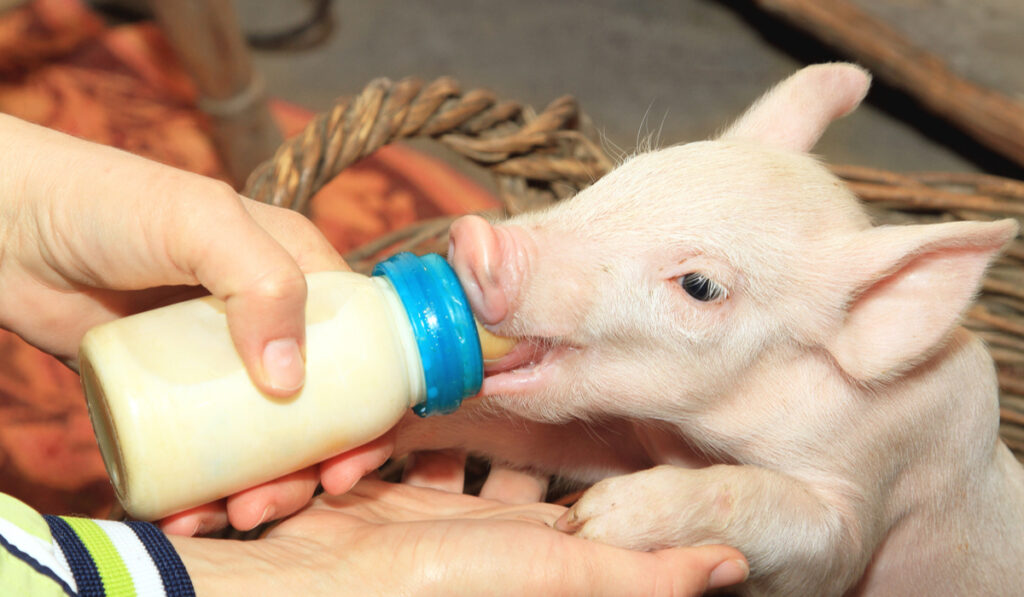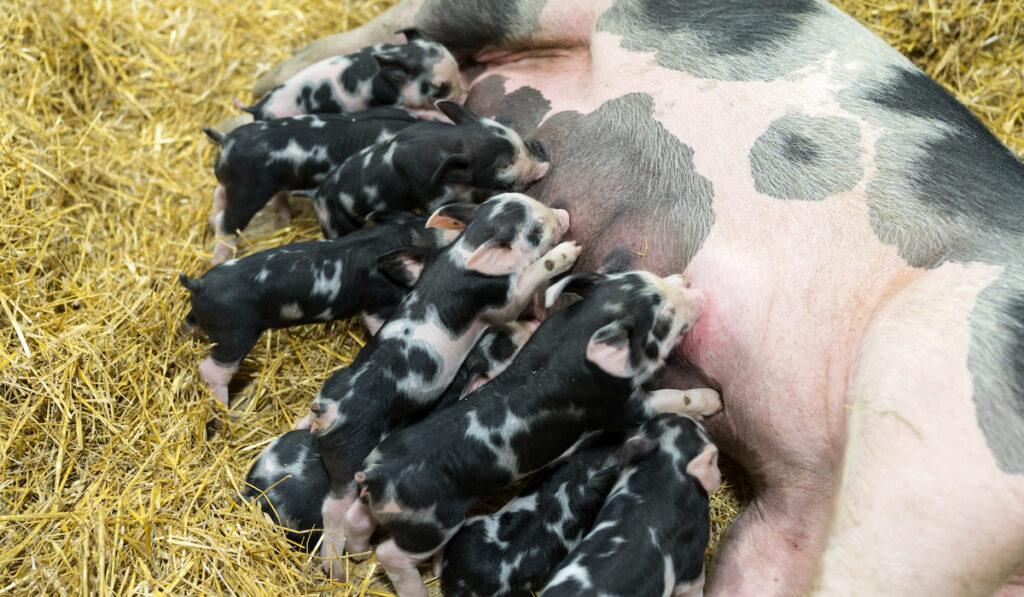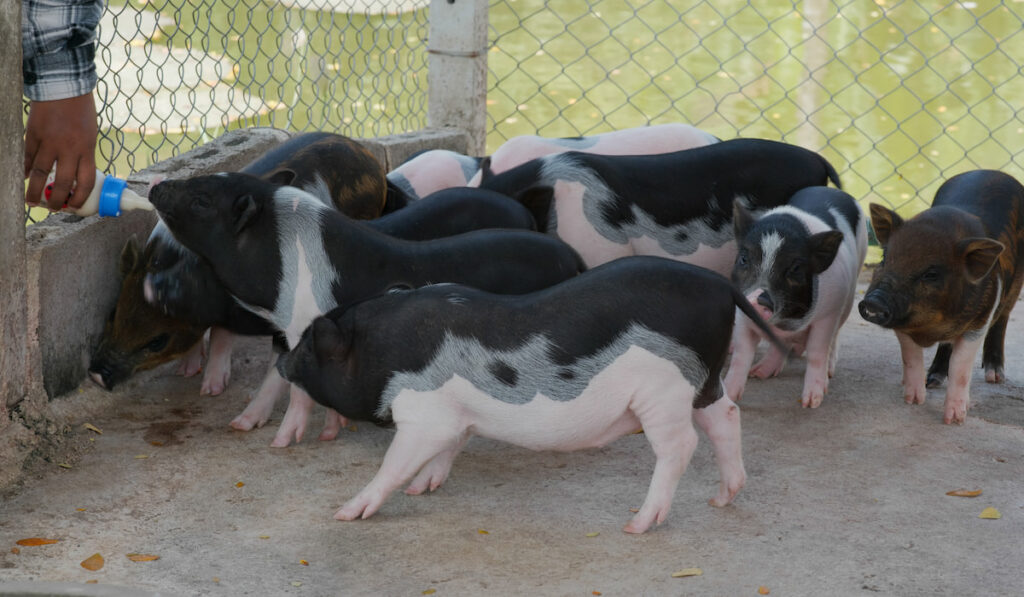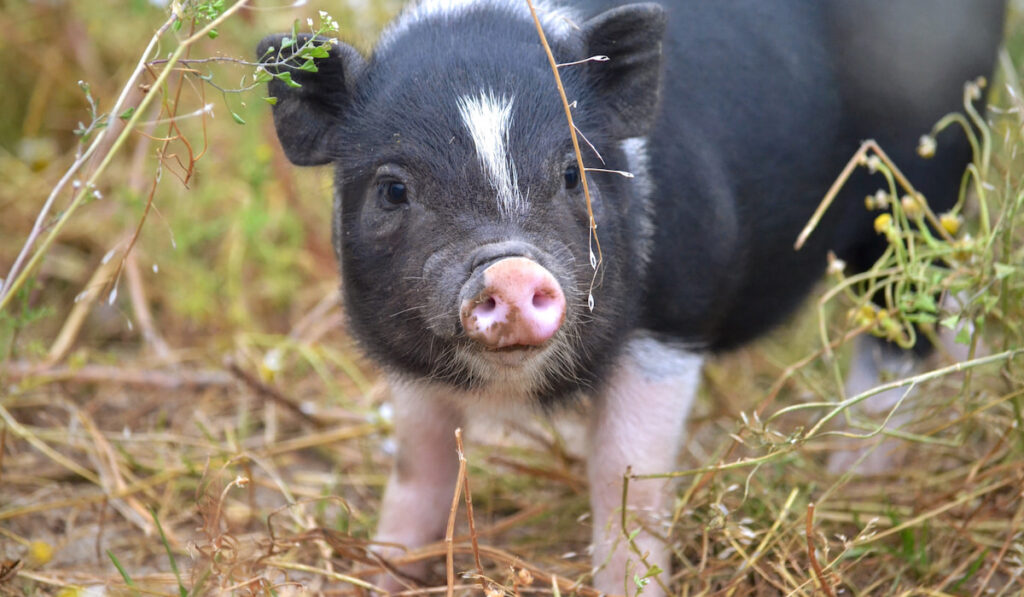What Milk to Feed a Piglet
No matter the species, raising babies is no walk in the park. Since pigs can have huge litters full of demanding piglets, this already difficult task can become even more involved.
Though the mother (the sow) will do most of the work, there are times when you may have to assist. If you have to bottle-feed your piglets, there's a lot you may need to know.
Can pigs drink cow milk?
It is safe and healthy for pigs to drink cow milk. If you are raising piglets, milk from the sow is the best choice, but cow's milk or goat's milk can be a good substitute if necessary.
No matter what you choose to feed your piglets, it is of utmost importance to obtain the nutrition they need from that milk source.

Feeding your piglets is only a small part of the responsibility that comes with raising them. Of course, you want to keep your litter of piggies happy, healthy and robust, but how can you do that?
If you're hungry for more help, keep reading to find out more tips for raising piglets and information on the crucial early stages of their health!
When Mom Can't Feed the Whole House
A mother's milk is crucial for the health and development of newborn mammals, and piglets are no exception. But sometimes, a sow is unable to feed her piglets.
Maybe she isn't producing enough milk, or her litter is simply too large to handle. Under unfortunate circumstances, sometimes a sow dies during or as a consequence of giving birth. So what then?
Cow and Goat Milk
Cow or goat milk is a good substitute for sow's milk.
However, due to the difference in protein structure and content, feeding cow's milk to a newborn piglet may be hard on their digestive system and cause diarrhea.
To avoid this, avoid feeding cow's milk to piglets until they are a few days old.
No matter what option you go with, it's important to know that the sow's (or cow's or goat's) colostrum is what you really want to get into your piglets once they're born. You should always keep colostrum on hand—it's typically readily available from local farmers or your local veterinarian in frozen form. Pig or bovine colostrum will do just fine.
What is Colostrum?
Colostrum is the first form of milk produced by mammals immediately after birth. Colostrum is essential to the proper development of mammals because it contains many bioactive compounds, namely antibodies.
The antibodies present in colostrum contribute to the healthy development of your newborn piglet's immune system as well as the development of their gut health through the provision of key nutrients.
Why is Colostrum Important for Piglets?

Piglets are born "immunologically naked", meaning they do not have their own antibodies. Like many mammals, piglets do not receive passive immunity through the placenta after birth.
Unfortunately, this means their immune system is not fully developed, so they can't fight off bacteria, viruses, or other creepy-crawlies that may come their way unless they are supplied with antibodies. That's where colostrum comes in.
Since a sow's colostrum is full of the antibodies piglets need to develop their immune system, they must begin to consume colostrum after they're born. When piglets drink colostrum from their mother (or another suitable source), they can absorb the antibodies through their intestinal tract.
For best absorption of antibodies, piglets should consume colostrum within 6 hours of being born.
Piglets who don't consume colostrum don't have great odds of survival. So what can you do to ensure that happens?
How to Bottle Feed a Piglet

You may need to bottle feed your piglets if they're unable to consume colostrum from their mother. No problem! A newborn piglet will accept colostrum from an eyedropper or syringe. At this stage, the nipple on a bottle may be too big, and you want to get as much colostrum into them as you possibly can within their first 24 hours.
After the first day, you can introduce a bottle with milk—many opt to use sow milk replacement. If the piglets don't go for it, continue to use the eyedropper until they become more used to the bottle.
How Often Should Piglets be Fed?
According to Oregon State University, piglets nurse about 15 times within the first 24 hours after being born and consume about 15ml of fluid at each feeding. Because of this, it's best to have a few people on feeding duty during this crucial time—the piglets must get their meals, but you also need to get some sleep!
After the first week or so, piglets will need to eat once every three to four hours.
Once you get to week three, they'll be drinking milk around three times a day, but you can also begin to introduce solid pig food.
How Can I Keep My Piglets Safe?
Like I said in the beginning, feeding them is only part of the battle. So what else goes into creating a happy and healthy environment for your piglets?

- Keep them warm. Newborn piglets should be kept warm under a heating lamp or on a heating pad at 85-90°F. To prevent drafts, be sure that all the walls in their pen are solid.
- Disinfect their environment. Newborn pigs are highly susceptible to infection, so it's crucial to keep their environment as clean as you can to give them the best chance of survival.
- Prevent crushing. Nearly 50% of newborn piglet deaths are due to crushing! When the sow rolls over, she can squish her piglets by accident. To prevent this, move any weak piglets away until they are more robust, use a properly sized farrowing crate, and have warm creeps where piglets can be separated from their mother.
Abnormal Piglet Behavior
Are you worried about some of your piglets? Do you want to be aware of any warning signs so you can intervene before it's too late? If you notice any of the following, contact your local veterinarian:
- Lethargy. A piglet that can't get up and move about always causes concern, especially if the piglet can't join in with the rest of the litter to nurse.
- Vomiting or diarrhea. Vomiting and diarrhea cause piglets to lose large amounts of water and electrolytes. This loss can lead to dangerous levels of dehydration that can even become fatal.
- Unable to suckle. Some very small or weak piglets may not suckle from their mother and will require some human intervention. This is especially important within the first 24 hours.
Resources
If you want a deep dive into piglet raising, check out the sources used in this article!
- https://en.wikipedia.org/wiki/Colostrum
- https://anrs.oregonstate.edu/sites/agscid7/files/anrs/careofnewbornpigs-estill.pdf
- https://franklinvets.co.nz/app/uploads/2019/08/1907GuidetoRearingHealthyPiglet.pdf
- https://www.pigprogress.net/Health/Health-Tool/diseases/Crushing-overlying/
- https://projects.ncsu.edu/project/swine_extension/nutrition/nutritionguide/nutrient_requirements/nutreq.htm
- https://morningchores.com/bottle-feeding-piglets/
- https://porkgateway.org/resource/baby-pig-management-birth-to-weaning/
williamsestinabot.blogspot.com
Source: https://farmhouseguide.com/can-piglets-drink-cow-milk/
0 Response to "What Milk to Feed a Piglet"
Post a Comment